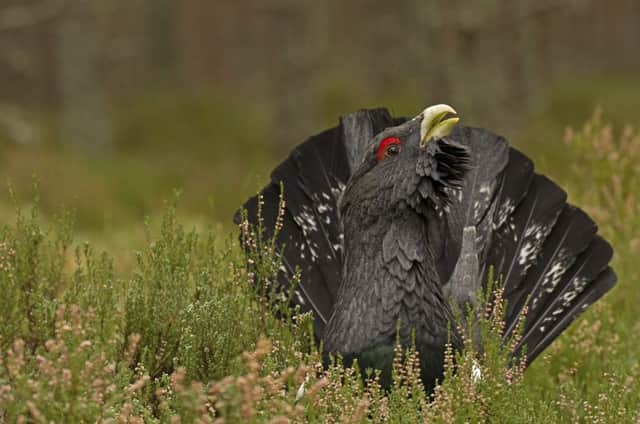Mission to save the capercaillie with 1,114 left in Scotland


A new project is being developed to help save one of Scotland’s most endangered birds from extinction.
Results from the latest survey of capercaillies, the world’s largest grouse species, show there are just 1,114 individuals left in Scotland. This represents a decline of more than 13 per cent in the past six years.
Advertisement
Hide AdAdvertisement
Hide AdNow an innovative new scheme is being put together to help save the iconic bird.
Capercaillies became extinct in the UK in the mid-18th century, largely due to the destruction of native woodlands.
Birds from Sweden were reintroduced into Perthshire in 1837, and the population grew to around 20,000 by the early 1970s.
But since then numbers have fallen dramatically, dropping by more than 50 per cent in the past 25 years alone.
The capercaillie has been placed on the Red List for species at risk of vanishing.
A number of factors have been blamed, including loss of suitable woodland, deaths from collisions with deer fences, wetter summers and disturbance by humans.
The remaining capercaillies are found in mature pine woodlands in the Highlands, Moray, Aberdeenshire and Perthshire, but Strathspey holds around 83 per cent of the surviving population.
Cairngorms Nature, a partnership that includes government agency Scottish Natural Heritage (SNH) and conservation groups such as RSPB Scotland, is spearheading the three-year project.
Advertisement
Hide AdAdvertisement
Hide Ad“Vital conservation work such as establishing rich feeding areas for adults and chicks, promoting woodland creation in the right locations to increase habitat, and carrying out targeted predator control around breeding sites has already brought benefits” said Sue Haysom, policy and advice officer with SNH.
“Now we need to build on this with energy and innovative approaches developed by experts and local communities to ensure that future generations can experience this magnificent bird.”
Despite their large size, capercaillies are fairly elusive, often sitting quietly in pine trees or on the forest floor.
In spring, however, they can be seen at communal “leks”, where the males chant their distinctive clicking song and strut their stuff in the hope of attracting a mate.